A dirty bike is not a happy bike – riding about with your beloved bicycle entombed in filth will end up costing you precious watts on the road, as well as hard-earned cash through increased maintenance costs.
Cleaning your bike with a pressure washer can save you a great deal of time and effort over the traditional bucket and sponge, provided you do it safely.
In this step-by-step guide, we talk you through how to jet wash your road or mountain bike, and dispel some myths about pressure washing safety.
Is it safe to use a pressure washer on my bike?
At every professional bike race up and down the land, there will be mechanics frantically cleaning the bikes of exhausted racers.
Despite having pro budgets, these mechanics aren’t going to be doing anything that would damage expensive components, jeopardising their riders' chances on race day.
Simply put, it is safe to pressure wash your bike, but like pro mechanics, you should follow some basic guidelines so as not to do any damage.
Pressure washing dos and don’ts
- Unless you're using a lower-power pressure washer, avoid spraying directly at any components that contain grease (headset, bottom bracket, hubs, etc)
- Spray from a safe distance and slowly get closer
- Remove any delicate componentry
- Protect leather or other absorbent saddles from getting soaked
- Thoroughly wash off any degreaser before applying lubricant
- Protect braking surfaces, particularly disc brake rotors, from contamination
How to jet wash your bike – a step-by-step guide
Step 1: Remove and protect
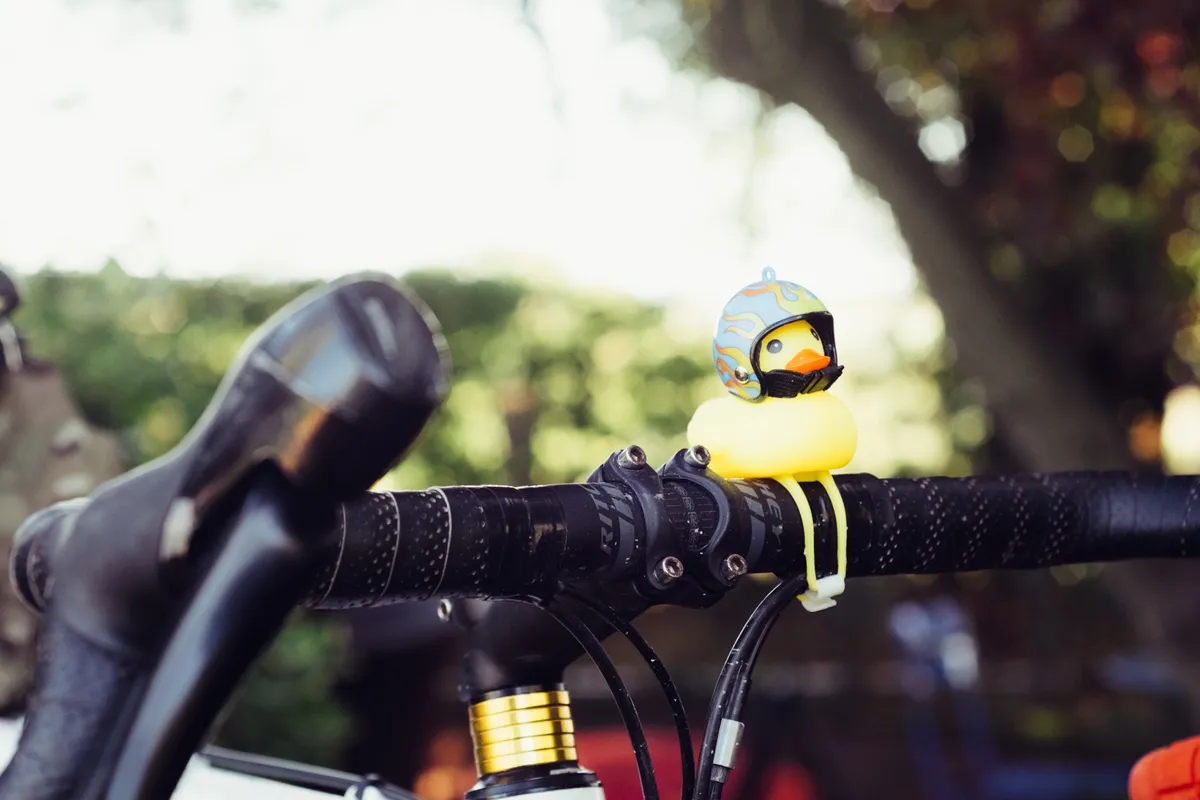
Before you even turn the pressure washer on, remove anything you consider to be vulnerable from your bike.
This could include your GPS cycle computer, any luggage you don't want getting soggy, and bike lights. If you have a permanently wired dynamo lighting system fitted to your bike, you may want to protect the headlight with a plastic bag.

If you have a leather saddle, a protective cover or plastic bag will prevent it from absorbing any water.
Step 2: First pass
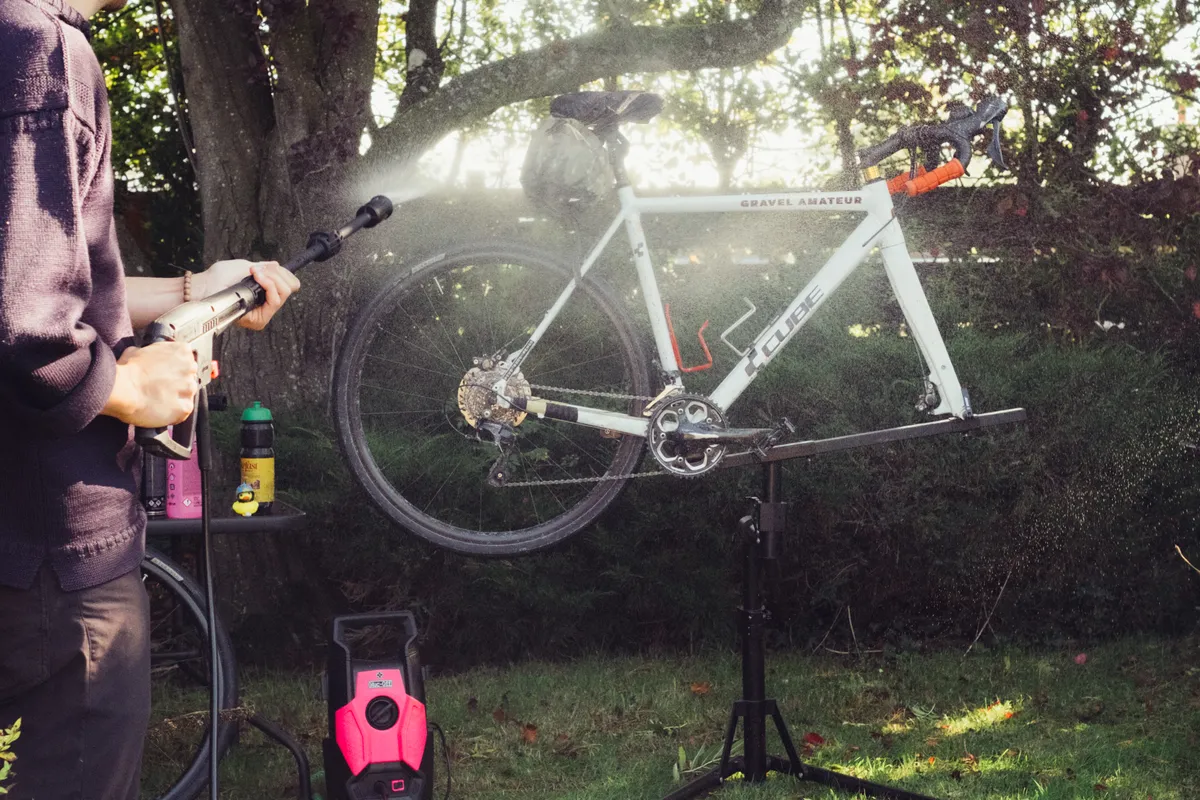
Turn your pressure washer on and soak the bike all over, starting from a safe distance.
Gradually get closer until you can safely remove the majority of the muck and no further.

Unless you are using a lower-power pressure washer, avoid directing the jet of water into any areas that contain grease; stick to the main tubes and the tyres and rims.
Your bike’s headset, bottom bracket, hubs and rear derailleur are all particularly vulnerable, as are pedal axles and any electronic componentry. Likewise, avoid seals on suspension components.
If you’ve ridden through any animal excrement, be particularly careful when spraying this off your bike and seriously consider wearing eye protection because some can carry parasites that can cause blindness.
Step 3: Degrease
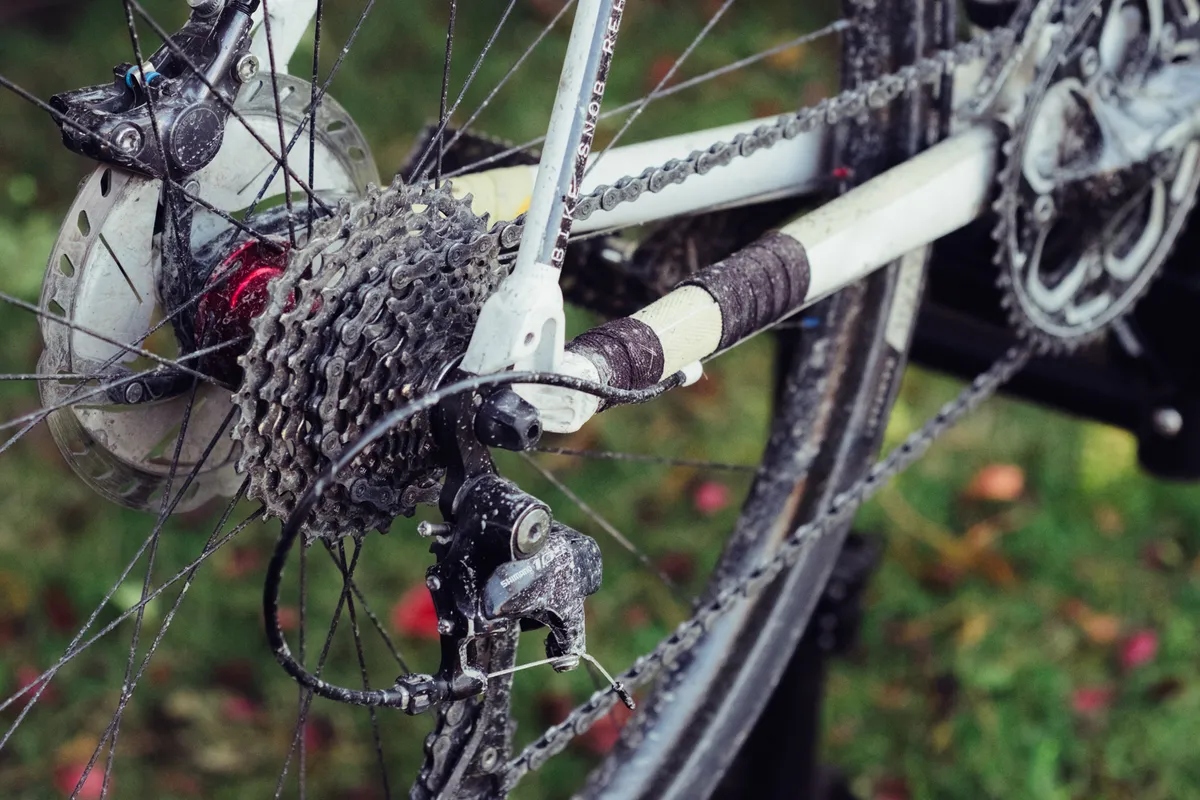
Now you have the lion's share of the grime removed, apply degreaser to the crankset, chain, derailleurs and cassette.
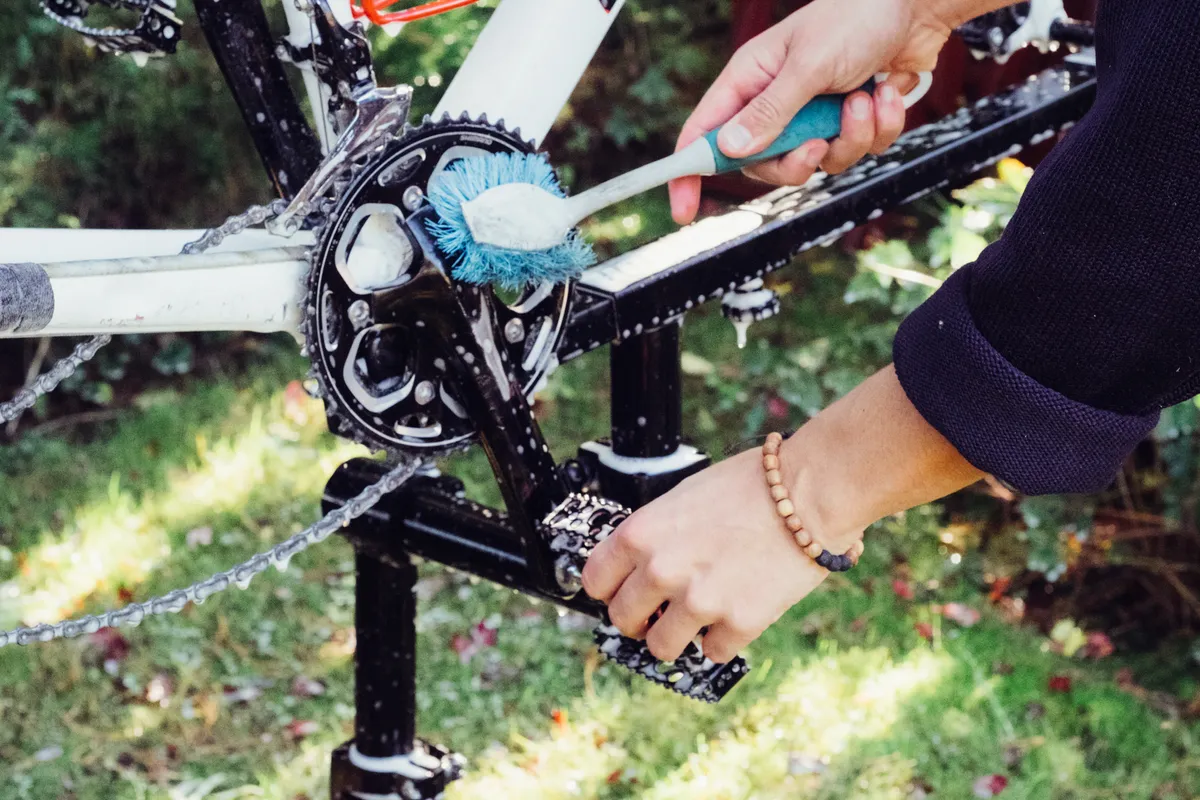
Use a stiff brush to release stubborn grease and a chain cleaner to get those rollers running smoothly again.
If you’re using a spray degreaser, be mindful not to get any on your disc brake rotors or braking surface.
Step 4: Cleaning products
If there is any degreaser left on your drivetrain, it will degrade and remove any chain lube you add on afterwards.
Liberally apply cleaning products to the whole bike, especially the drivetrain.
Use a dirty sponge for the drivetrain and a clean one for the frame, seatpost, saddle and bar. Again, be careful to avoid flicking any greasy suds onto the disc rotors.
Step 5: Second pass
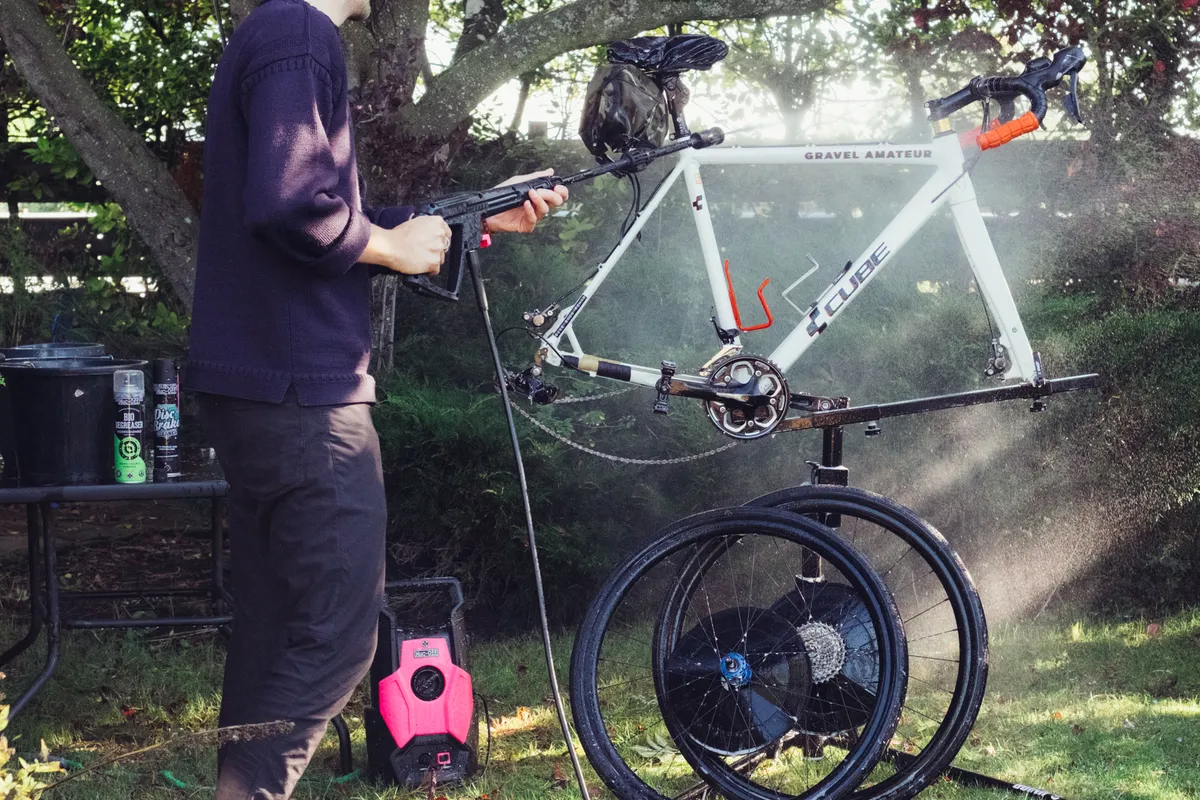
Use the pressure washer again to remove any soapy residue from the whole bike, this time at a slightly greater distance than before.
Any dirt should be loose and flow off easily by this point, so there’s no need to be close.
Step 6: Dry
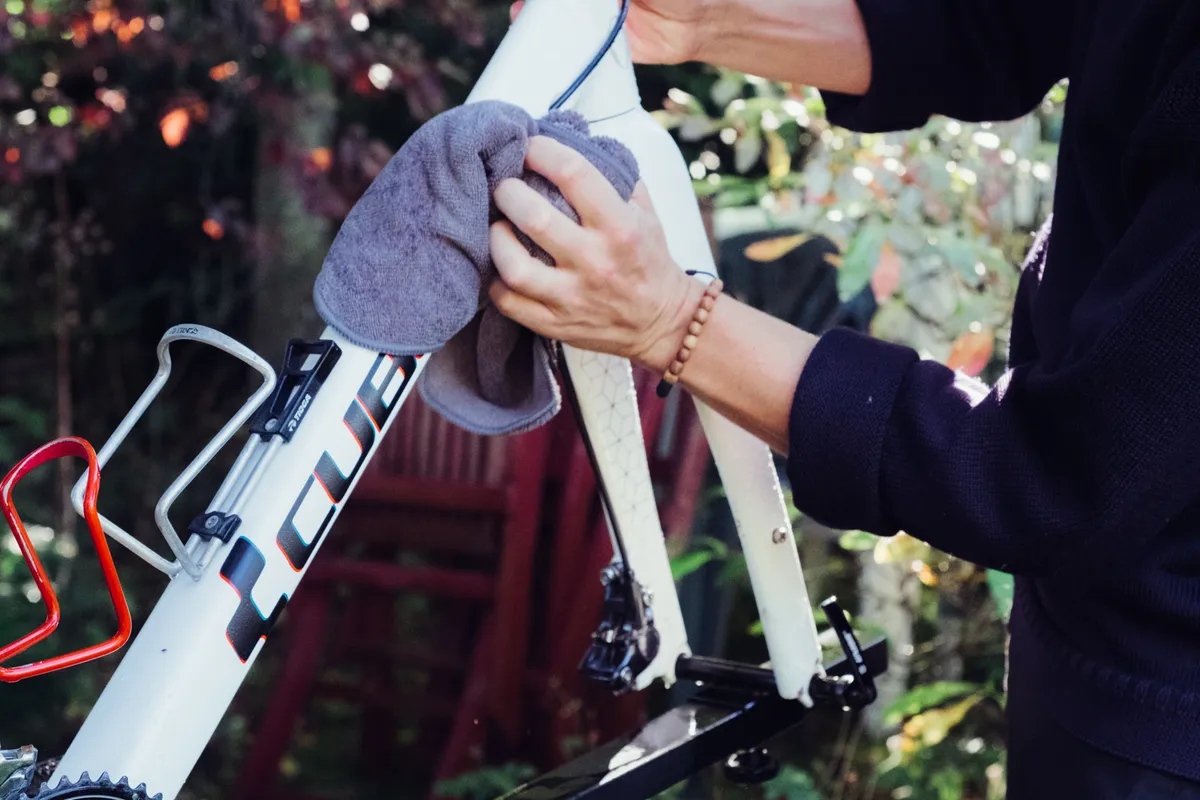
Using a clean rag, give the chain a quick dry before leaving the bike to dry fully.
If you’re in a rush, an old towel will do the trick, but laying the bike driveside up in a sunny spot is just as effective if it’s not too cold.
Step 7: Lubricate and protect
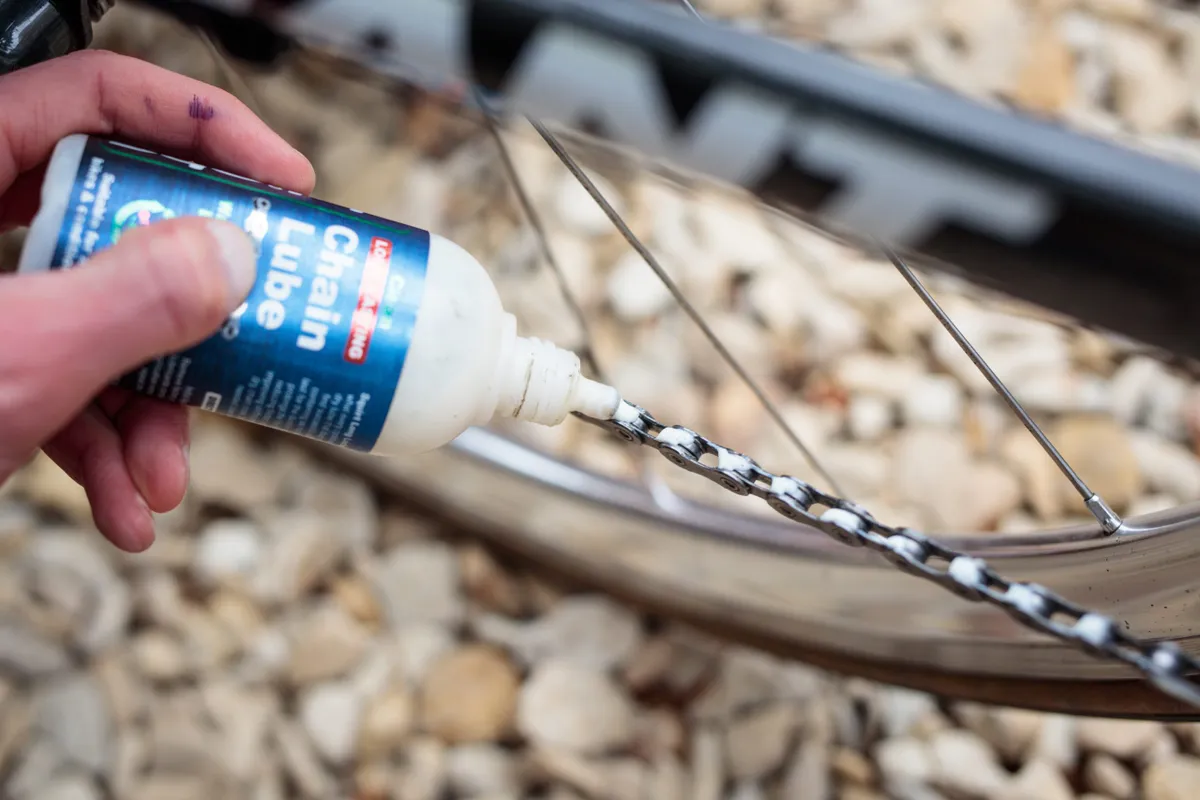
Nobody likes the sound of a dry chain (and it’s less efficient), so don’t forget to apply your favourite lubricant and wipe off any residue following the manufacturer's instructions.
It’s important you wipe off excess lube because it helps to stop your chain from getting contaminated with road grime or mud, which will put you straight back to square one.
If you want to have the most efficient (and cleanest) chain possible, you may want to consider waxing your chain.
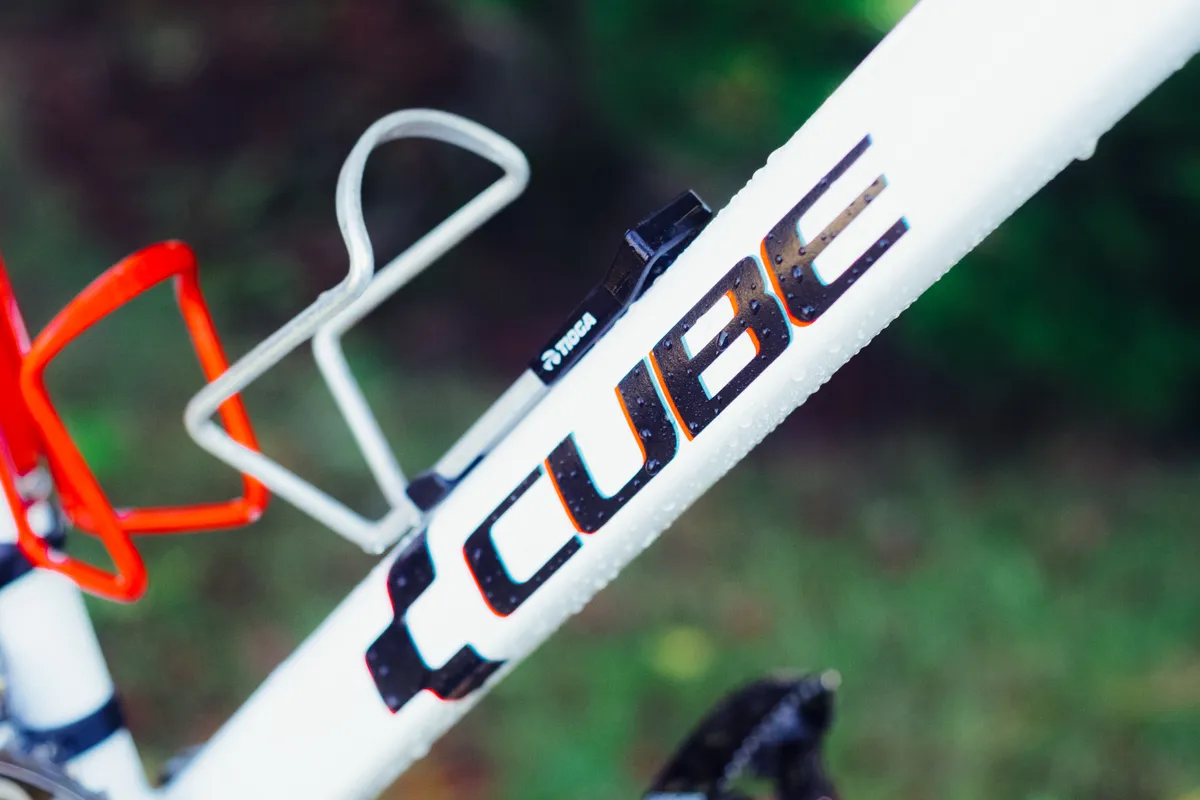
As for the frame, prevention is better than cure. Applying a coat of protective compound before your next ride can save you precious washing time afterwards. It can also help keep your paint looking fresh.
Some protective compounds are aerosol-based (others are applied as a liquid with a microfibre cloth), which can contaminate your brake pads, so keep it away from your discs,
